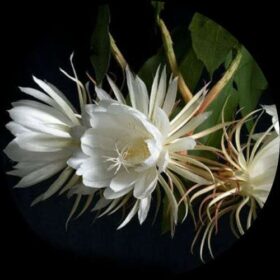- Empty cart.
- Continue Shopping
Bangal (Rose)
₹330.00Current price is: ₹330.00. Original price was: ₹500.00.
Colour : Red
The Bangal rose flower plant is a delightful addition to any garden. Its graceful blooms and captivating fragrance will bring joy and elegance to your outdoor space. Create a mesmerizing garden display with the enchanting Bangal rose.
Add to cart
Specific rose variety called “Bangal” as it may refer to a local or regional name that is not widely recognized. However, I can provide a general description of a typical rose plant.
Appearance:
- Flower color: Roses come in a wide variety of colors, including red, pink, yellow, white, orange, and more. The exact color of the flowers on a rose plant may vary depending on the specific cultivar.
- Flower form: Roses typically have large, showy blooms with layers of petals that can be single, semi-double, double, or even fully double. The shape and arrangement of the petals can also vary, with some roses having a classic rose shape with tightly-packed petals, while others may have a more open or ruffled form.
- Plant size: The size of a rose plant can vary greatly depending on the cultivar and growing conditions. Some rose plants can be compact and bushy, while others can grow into tall climbers or ramblers. The size of the plant can also depend on whether it is a standard rose (grafted onto a tall rootstock) or a shrub rose (grown on its own roots).
Fragrance:
- Scent: Many roses are known for their delightful fragrance, which can range from sweet and floral to spicy, fruity, or even musky. The strength and type of fragrance can vary depending on the rose cultivar, with some roses having a very strong scent that can fill the air with their perfume, while others may have a milder or no fragrance at all.
Care:
- Hardiness: Rose plants can have varying levels of hardiness depending on the cultivar, with some being more cold-tolerant and suitable for colder climates, while others may be more heat-tolerant and suited to warmer regions. It’s important to choose a rose cultivar that is well-suited to your local climate.
- Sun exposure: Roses generally prefer full sunlight, at least 6-8 hours of direct sunlight per day, to produce the best blooms and maintain healthy growth.
- Watering: Roses require regular watering, typically about 1-2 inches per week, to keep the soil consistently moist but not waterlogged. It’s important to water at the base of the plant, avoiding overhead watering, to prevent fungal diseases.
- Pruning: Pruning is important for maintaining the health and shape of a rose plant. It is typically done in late winter or early spring, before new growth begins, and involves removing dead, diseased, or crossing branches, as well as shaping the plant for optimal growth and blooming.
Uses:
- Garden: Roses are widely used in gardens for their beauty and fragrance. They can be planted as specimen plants, in mixed flower beds, as hedges, or as climbers or ramblers on trellises or walls, adding color, texture, and elegance to any landscape.
- Cut flowers: Roses are popular choices for cut flowers, used in floral arrangements, bouquets, and other floral designs due to their classic beauty, versatility, and fragrance.
- Gifts: Roses are often given as gifts for special occasions, such as birthdays, anniversaries, or Valentine’s Day, as they are often associated with love, romance, and affection.
In summary, roses are beloved flowers known for their beauty, fragrance, and versatility. With a wide variety of colors, forms, and fragrances available, roses are widely used in gardens, as cut flowers, and as gifts for special occasions. Proper care, including suitable sun exposure, watering, and pruning, is important for maintaining healthy and blooming rose plants.
Add a review
Currently, we are not accepting new reviews













Reviews
There are no reviews yet